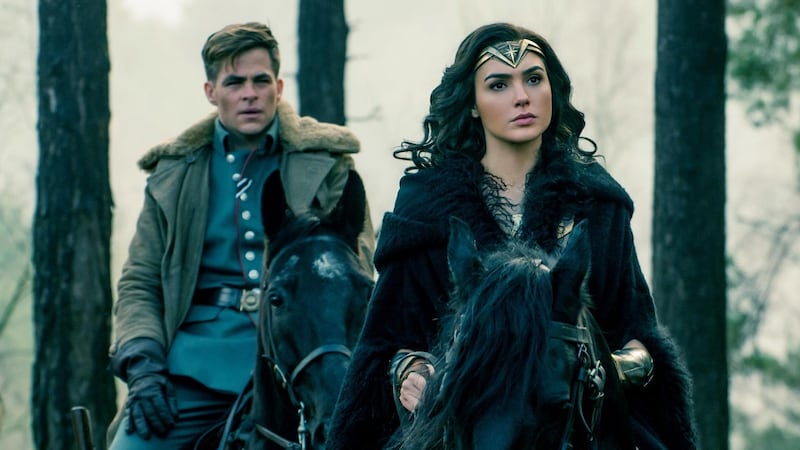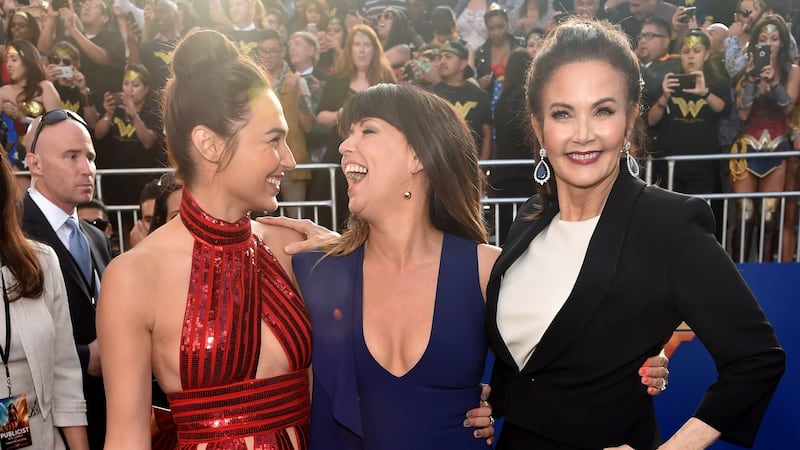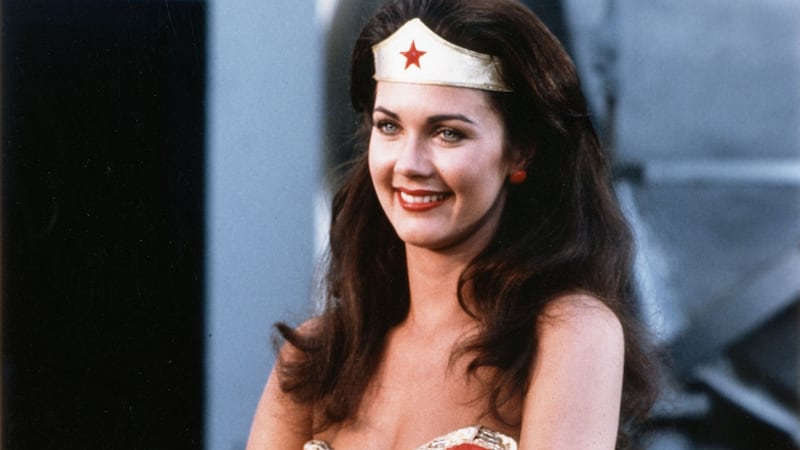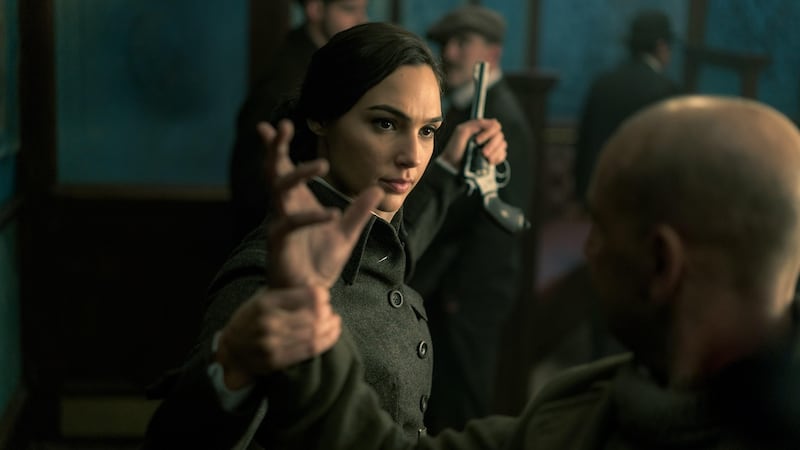It's a question that has plagued womankind since the dawn of time. Or at least since the dawn of the Silver Age of Comics. Is Wonder Woman a feminist? Last week, there must have been face-palms all round at Warner Bros when Patty Jenkins, a director the studio mindfully selected to helm Wonder Woman's first headlining feature film, turned around and peed in the pool by insisting that Wonder Woman "…is not a feminist" and that Jenkins "never [thought] about her as a woman".
It's odd to hear a director who hasn't made a feature film since the Oscar-winning Monster talk this way. Especially in an era when even the Kardashians insist they are feminists. Unhappily, Jenkins' film is an extension of these views.
Wonder Woman may be a better movie from the DC Extended Universe than the underperforming Suicide Squad and the much-maligned Batman vs Superman. The character may now be played by former Israeli defense forces veteran Gal Godot, rather than former Miss World America Lynda Carter. Still, once the picture takes Diana Prince (to use her humanised handle) out of the Amazonian matriarchy where she grew up, and plonks her in the middle of the first World War, she quickly comes to exemplify Hollywood's troublesome Smurfette Principle.
Wonder Woman has been a problematic figure for feminists ever since her 1941 debut in All Star Comics
Never mind the superpowers and magic bangles. In common with Princess Leia or Miss Piggy, on the western front, Wonder Woman becomes the token girl on a boy's own adventure. As such, she's the only character walking across No Man's Land in her knickers.
(Worth noting: various incarnations of Wonder Woman, including comics published in 1969, 1974, 2010 and 2015, have depicted the character in trousers and she had bike shorts for a spell in the 1990s. But we're back to the hot pants.)
Rather confusingly, Gal Gadot has insisted, against both her director and the final cut, that: “Wonder Woman is a feminist, of course. I think people have a misconception about what feminism is. People think hairy armpits and women who burn bras and hate men. That’s not it. If it’s salaries, then we get paid equal to men. It’s not men vs women or women vs men.”

We should not be surprised by such contradictions. Wonder Woman may have graced the first ever edition of Gloria Steinem's Ms Magazine in 1972 but she has been a problematic figure for feminists ever since her 1941 debut in All Star Comics.
Last year, the United Nations pulled the plug on a campaign featuring Wonder Woman as an ambassador for women and girls after almost 50,000 people signed a petition in protest: "A large-breasted white woman of impossible proportions, scantily clad in a shimmery, thigh-baring body suit with an American flag motif and knee-high boots" is not an appropriate spokeswoman for gender equity at the United Nations, the petition said.
They don’t know the half of it.
Bloodcurdling masculinity
Wonder Woman began life in the 1940s, when the publisher of All-American Comics (later DC Comics) brought in Dr William Marston (1893-1947), as an antidote to the "bloodcurdling masculinity" that was perceived to be ruining the comic-book business. The Harvard educated Marston helped invent the lie detector and hero-worshipped Emily Pankhurst, Margaret Sanger (the birth-control pioneer and founder of Panned Parenthood), and other suffragettes. He was also a fraud, a liar, and polyamorist who lived with his lawyer wife Elizabeth Holloway, and a former student Olive Byrne (who was also Margaret Sanger's niece). He had two children with each woman and the family were occasionally joined by a third "wife".
As <a class="search" href='javascript:window.parent.actionEventData({$contentId:"7.1213540", $action:"view", $target:"work"})' polopoly:contentid="7.1213540" polopoly:searchtag="tag_person">Jill Lepore</a> notes in her excellent 2014 book, <em>The Secret History of Wonder Woman,</em> Marston often conflated feminism with fetish
It was Holloway who initially suggested that Marston’s new progressive comic book hero might be a woman. Marston loved the idea: “Women’s strong qualities have become despised because of their weakness,” he explained to his publisher. “The obvious remedy is to create a feminine character with all the strength of Superman plus all the allure of a good and beautiful woman.”
In 1942, Wonder Woman became an honorary member of the DC superhero club, Justice Society of America. Her new position? Secretary. That same year, when a press release finally unveiled "Dr William Moulton Marston, internationally famous psychologist" as Wonder Woman's creator, he talked a good feminist game: "Frankly, Wonder Woman is psychological propaganda for the new type of woman who, I believe, should rule the world."
But as Jill Lepore notes in her excellent 2014 book, The Secret History of Wonder Woman, Marston often conflated feminism with fetish. "Not a comic book in which Wonder Woman appeared, and hardly a page lacked a scene of bondage," notes Lepore. "In episode after episode, Wonder Woman is chained, bound, gagged, lassoed, tied, fettered, and manacled. She's locked in an electric cage. She's winched into a straightjacket from head-to-toe. Her eyes and mouth are taped shut. She's roped and then coffined in a glass box and dropped into the ocean. She's locked in a bank vault. She's tied to railroad tracks. She's pinned to a wall. Once, so that she can be both entirely bound and moveable, her fettered feet and wielded to roller skates. 'Great girdle of Aphrodite,' she cries: 'Am I tired of being tied up!'"

Marston was most insistent about the high bondage quotient. “Women enjoy submission,” he told his DC editor, against a tide of complaints from readers. There were other letters too, as BDSM enthusiasts began to enquire where they might purchase the manacles or leather mask or the glass coffin from the latest Wonder Woman adventure.
Since Carter hung up her tiara, there have been many failed attempts to bring Diana Prince back to a TV screen or multiplex near you
Much of this kink was put in the service of anti-Nazi propaganda during the second World War, when Wonder Woman served as a lady Superman in a star-spangled bustier. How quickly they forgot her war effort.
Wonder Woman was about to suffer two near-fatal blows: Marston's death from skin cancer in 1947 and the publication of Fredric Wertham's hysterical anti-comic book diatribe, Seduction of the Innocent in 1954. Congressional overreaction to Seduction of the Innocent ensured that Diana Prince's days of demanding equal pay for female textile workers (as she once did during the 1940s) were numbered.
By 1968, having spent much of the previous decade working as a lonely-hearts columnist and mired in soapy romance plots, she surrendered her powers to be closer to long-time squeeze Steve Trevor. Then, rather bafflingly, he died and she opened a mod clothes shop.
Lynda Carter
Most of what modern audiences know of Wonder Woman has been derived from the short-lived but successful 1970s TV series, starring Lynda Carter. Wonder Woman – or The New Adventures of Wonder Woman – variously pitched the superhero against haunted photographs, mime-artist kidnappers, a leprechaun, a hypnotic pan-flute soloist and an evil disembodied brain.
Wonder Woman is only ever as wonderful, or as radical, or as progressive, or as feminist, as her author allows
Since Carter hung up her tiara, there have been many failed attempts to bring Diana Prince back to a TV screen or multiplex near you. Between 1997 and 1999, NBC attempted to develop a new series to no avail. Drawing on John Byrne's ripped and much-loved 1990s series of comics, Joss Whedon, of Buffy and Avengers fame, penned a rejected script in 2006. Laura Montgomery directed Keri Russell in the role for a one-off animated special in 2009. A 2011 TV pilot created by David E Kelley and starring Adrianne Palecki never aired.

Away from moving pictures, Wonder Woman has continued to thrive and evolve as a comic-book character. Last year, DC writer Greg Rucka confirmed what Fredric Wertham suspected and what author Tim Hanley explored in his 2014 book Wonder Woman Unbound: The Curious History of the World's Most Famous Heroine that Wonder Woman is canonically gay. "By our standards, where I am standing," he told a comic book convention, "Themyscira [Wonder Woman's home island] is a queer culture. I'm not hedging that. And anyone who wants to prevaricate on that is being silly."
Back in the closet
Jenkins’ film shoves the titular heroine back into the closet with a resounding heteronormative thud, as a squishy romantic subplot between the Amazonian and dashing all-American pilot Steve Trevor (Chis Pine, who steals the movie) unfolds.
Wonder Woman is only ever as wonderful, or as radical, or as progressive, or as feminist, as her author allows. And Jenkins has made her feelings clear on the matter. Against this, she is the first woman to direct a summer tent-pole super hero, just as Wonder Woman is the first female superhero to receive top line billing.
In a marketplace that is crying out for female-led films that can only be an advantage. Who on earth could have predicted that Hidden Figures, a film about black female mathematicians at Nasa in the 1960s would gross $229,739,623 to date? At the time of writing, Beauty and the Beast has made $1.233 billion globally, with another 2017 female-led film, Star Wars: The Last Jedi, certain to overtake, come December.

The industry, however, has been slow to capitalise on the female 50 per cent of the audience. A leaked Wikileaks correspondence from August 2014 shows Marvel chief executive Ike Perlmutter, with a breathtaking bit of confirmation bias, listing Supergirl, Catwoman and Electra as examples of female-led superhero movies that didn't perform well financially. The same executive fails to note that male-led superhero films dating from the same period – Punisher, Daredevil – also failed to set the box office alight. Or that prior to Sam Raimi's Spider-Man and Jon Favreau's Iron Man, comic-book films (Howard the Duck, anyone?) were more likely to bomb than do boffo trade.
Wonder Woman may not be the feminist hero we want or deserve. But if she opens to $175 million that industry analysts are predicting this weekend, she just might save cinema from some knuckle-dragging ideas.

















